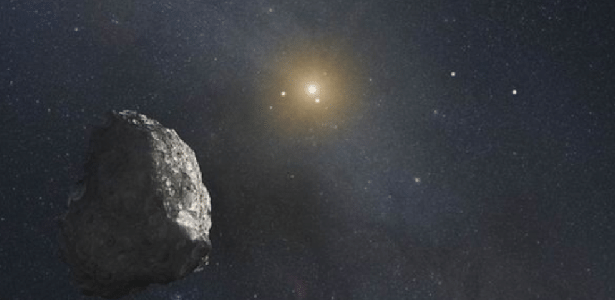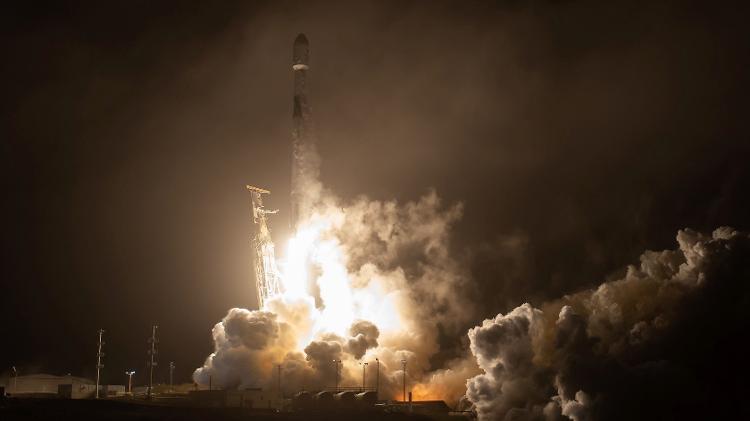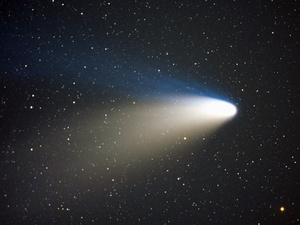If you’ve ever watched Don’t Look Up, which premiered on Netflix in early December, you must have looked, excuse the pun, and thought about the danger of an unwanted visitor to space, in the form of a giant boulder, landing in the moment. last on our beloved planet.
Therefore, nothing is better than talking to those who really know this topic to find out how comets and asteroids are detected, and if in fact there is a danger of finding out that one of these celestial bodies is about to collide with the Earth.
The problem has a name: NEO
No, we’re not mixing movies here and we’re talking about the character Neo from the Matrix series. NEOs are actually the initials of the word “Near-Earth Objects,” or NEOs. Despite what the name implies, this does not mean that these objects are necessarily close to our planet, but rather that their path passes close to the orbit that the Earth develops around the Sun.
NEOs are objects whose orbit closest to the Sun is 1.3 AU. Each astronomical unit corresponds to the average distance of the Earth’s orbit from the Sun, which is about 150 million km. If these objects are more than 140 meters in diameter, they are considered PHOs (the initials “Potentially Hazardous Object”, or Potentially Hazardous Object).
says Roberto Dias da Costa, a professor in the Department of Astronomy at the University of São Paulo’s Institute of Astronomy, Geophysics and Atmospheric Sciences (IAG-USP).
Detecting an asteroid or comet with these characteristics is a relatively simple, albeit laborious, process. Basically, what you do is reverse the title of a Netflix movie. In other words, search for .
There are monitoring programs dedicated exclusively to the task of detecting moving objects in the solar system. They are telescopes that are constantly photographing the sky, creating a kind of mosaic of images.
“Each image is compared to the previous image from the same position. When a moving object appears, it changes its position from one image to another, while the stars are clearly not moving. As soon as simple false positives such as airplanes or weather balloons appear, suspicious bodies are under constant observation, That is, they are monitored to determine their distances and orbits,” Costa explains.
These telescopes can be either on the surface of the Earth or in the orbit of our planet. NEOWISE fits this second case. It’s a space telescope launched in 2009—still under the name WISE (the initials Wide Field Infrared Survey Explorer, or Open Field Infrared Analysis Explorer, free translation)—whose initial purpose was to analyze the sky. Asteroids, stars and galaxies. In 2013, it restarted and began observing the so-called near-Earth objects.
“It monitors the entire sky at wavelengths from 3 to 25 micrometers [micrômetros]. This telescope was responsible for observing the comet NEOWISE, which took the same name as the telescope and was observed in Brazil in 2020. This telescope takes pictures of the sky every 11 seconds. There are more than 7,500 images per day that can be compared to each other at different types of wavelengths in the wavelength range observed by the telescope,” says Roberta Duarte, a doctoral student in astrophysics in the Department of Astronomy at the Institute of Astronomy, Geophysics and Atmospheric Sciences at University of São Paulo (IAG-USP).
Once an object is detected, its orbit can be determined using several techniques. Among them, Duarte demonstrates the use of other wavelengths, both visible and radio, as well as measurements by photometry (analysis of the flux or intensity of electromagnetic radiation from an astronomical object) and spectroscopy (which monitors the spectrum of a radioactive object. Electromagnetic
“This allows analyzing the curve of light and understanding how the brightness of an object changes. From there, the orbit is calculated using astronomy instruments, the area of astronomy that studies the measurements of objects in the sky as well as the positions and movements of these objects in the event of an object very close to Earth, can also be The use of radars that can detect at short distances or after entering the Earth’s atmosphere,” adds Duarte.
On the NASA Jet Propulsion Laboratory website, you can find an instrument that shows the orbits of known objects of interest. Adequate click here Include the thing you want. For a list of NEO names, just visit here.
Bigger is better
It may seem counterintuitive, but the larger the asteroid or comet, the better. This is because, usually, larger objects are detected when they are very far from Earth.
“This cliché from disaster movies that something has been found and will hit the ground in a few days or hours is not true. Due to the large distances involved, these objects are usually found years before they pass close to us. They are small, with Sizes on the order of ten meters or less, is that they are found very close or sometimes not previously seen and are only discovered when they fall,” Costa points out.
An example of a small object (at least in astronomical terms) is the Chelyabinsk meteorite, which fell in 2013 in Russia. It is estimated that its diameter was between 15 and 17 meters, which prevented its detection previously. However, it did blast damage to the sky, which indicated how dangerous these objects were. Similar passages occurred in Russia, in 1908, with the Tunguska event, and in Brazil, in 1930, with the Rio Corosa event.
So larger objects were discovered earlier. But what do you do if a large object is found and ends up on the ground?
For now, the answer to that is a bit scary: nothing. This is because there is still no standard procedure to work in these cases.
This situation, however, tends to change. On November 24, 2021, NASA launched a space mission called DART (Double Asteroid Redirection Test), which aims to test a system capable of changing the standard motion of objects such as asteroids and comets, thus avoiding potential impacts in the future.
The target is 65803 Didymos, a binary asteroid whose main body diameter is about 800 meters and whose orbit is most of the time between Earth and Mars – at its closest point to Earth, the distance between us is about 20 times. Planet and Moon: The idea is to collide a probe on its moon, which is about 160 meters in diameter, and see how much its trajectory has changed. If the result is satisfactory – even if the deviation is small, this tends to cause significant changes in the trajectory in the medium and long term – then this technology has everything to be the main way to defend our planet.
Asteroid or Comet: Which is More Dangerous?
Given the impact of a celestial body on Earth, would it be more dangerous if that object was an asteroid or a comet?
In practice, the answer is straightforward: whatever. What matters most in this case is size. It goes without saying that the more an object hits the ground, the more damage it will do.
“To cause damage on a global scale, an object hundreds of meters or kilometers would be needed. In general, most objects observed so far are fairly small and do not pose risks. Another relevant point is that most of them already have their orbits. Calculated on Over the next 100 years and there is no danger of a serious impact on Earth,” says Duarte.
In general, asteroids and comets are very similar in general, the biggest difference is their composition. While comets have ice and dust in their composition – which helps explain the composition of the “tail” – asteroids are often made of minerals.
Now if we were to talk about risk as a measure of chance of hitting Earth, the balance ends in favor of asteroids. This is because in the solar system, most of them are concentrated in a belt between the orbits of Mars and Jupiter. In astrological terms, this means that they are close to us.
Comets, in turn, are rare, but they have a property that ends up annoying: their unpredictability.
“It must be remembered here that the planets and most asteroids move around the sun in the same plane as if they were on a table. This plane coincides with the plane of the sun’s equator and is due to the common origin of all bodies when the solar primary nebula condensed, and the sun formed in the center and formed an equatorial disk around it And from the disk formed planets, satellites and asteroids, so everything moves in about the same plane, with one exception or another due to collisions at the time of formation,” Costa details.
Comets, in turn, are “stored” in the Oort cloud, which is almost spherical in shape – as if it were the “shell” of the solar system – and is very far from the Sun, despite its gravitational connection with it. “Very far” in this case is about a thousand times farther from the Sun than the planets.
“Therefore, when a comet enters the inner solar system, where we live, it can appear from any direction, without taking into account the typical orbit of objects within the system. For this reason, astronomers are still surprised by comets that have previously been relatively close to us,” concludes Costa.

“Hardcore beer fanatic. Falls down a lot. Professional coffee fan. Music ninja.”

![[Atualizado] Players say Ghost of Tsushima update 2.19 “broken” the game](https://psxbrasil.com.br/wp-content/uploads/2022/06/ghostoftsushima_1080_2.jpg)







More Stories
The Udesc Postgraduate Course in Human Movement Sciences is accepting applications
The nurse and health center employee are being investigated regarding the vaccine leak
“We are committed to reducing regional asymmetries,” says Minister Luciana Santos in the central and western phase of 5CNCTI